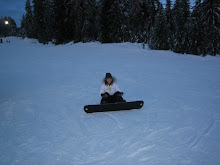Introducing the CosaNostra Pizza Headquarters, a place where the deliverator will deliver your pizza in exactly thirty minutes, according to their time, blazing proudly in LED. Immediately into Snow Crash, a reader is faced with two characters: Hiro, the deliverator and freelance hacker, and Y.T., a young girl represented with technology. Author of Snow Crash, Neal Stephenson represents America futuristically with much imagination in its characters.
The idea of Hiro becoming a deliverator for a pizza joint with the computer knowledge and imagination he has, is just unbelievable in the beginning. "Even the word "library" is getting hazy" (22). There were books, then magazines and videotapes, and then "all of the information fot converted into machine-readable form, which is to say, ones and zeroes" (22). More information became up to date and the number of media grew. Henry Jenkins argues in Convergence Culture that the media will help broaden cultures and across many others. Media content relies heavily on consumers' active participation. Hiro clearly stated that he learned "the hard way that 99 percent of the information in the Library never gets used at all" (22).
Stephenson proves media content and the use of technology to be prominant in the future with the use of Y.T., a young girl who is part of the art of new media. She is riding on a board that can detect when an object is a certain amount of space becomes in the way of a smooth ride. Is this the new age of video games? A virtual experience? Video games are used to take a person out of reality and into an imaginative creative world that is meant to take you out of your 'comfort zone'.
Video games and traditional media both focus on storytelling, which clearly Stephenson used as a way to commit Hiro to his ideal 'warrior prince' mode. The digital realm represents people who have created themselves in order to represent themselves in their own imaginative light. "The digital domain is assimilating greater powers of representation all the time, as researchers try to build within it a virtual reality that is as deep and rich as reality itself " (Murray 28). Hiro has created an audiovisual body to communicate with others in the Metaverse, where he reigns as Prince of hijackers. He vanishes back to reality, only to still be in the Metaverse, where communication is not needed with the outside world.
Media entitles communication whether by phone, television, or radio. Y.T. delivers and picks up packages all around the world, considering by this time of the future, there are no longer mailboxes. Y.T. has the visas of over three dozen countries laminated on her chest. Three Dozen! Laminated! This would definitely not be possible if it werent for technology in the age of new media. The idea of a "virtual reality" and reality in future America, is so widespread in ideas and the computer-graphics community. Without computers, things would just be reality. "Home? Mom says. Yeah, home seems about right" (Stephenson 468).
Hiro involves himself in media. "People make their living that way--People like Hiro Protagonist. They just know stuff, or they just go around and videotape stuff" (Stephenson 35). YouTube and other websites allowing for the sharing and viewing of uploaded files, allow for the 'remixing' and new storytelling to occur. Our culture has relied on these sources as primary sources for knowledge. Remixing and creating these videos rely on creativity of the mind, specifically the imagination.
Jenkins, Henry. Convergence Culture: Where Old and New Media Collide. New York University Press 2006.
Murray, Janet H. Hamlet on the Holodeck: The Future of Narrative in Cyberspace. The MIT Press, Cambridge, Massachusetts. 1997.
Stephenson, Neal. Snow Crash. Bantem Dell, New York 2003.
Subscribe to:
Post Comments (Atom)

No comments:
Post a Comment